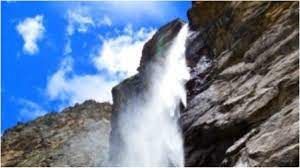Attractions
Manki Point
Manki Point, also known as Monkey Point, is a prominent tourist attraction in Kasauli, a hill station in Himachal Pradesh, India. It is located at an altitude of 6,401 feet (1,951 meters) above sea level and is known for its natural beauty and the small Hanuman temple situated at the hill's summit.
Gue Village
Gue Village is a small and remote village located in the Kinnaur district of Himachal Pradesh, India, not far from Chitkul. Gue is known for its unique and intriguing attraction – the naturally preserved mummy of a Buddhist monk.
Starry Nights Camping
Camping in Chitkul, especially for stargazing, is a fantastic experience due to its remote location and minimal light pollution. Chitkul's clear skies and high altitude make it an excellent destination for observing the night sky and enjoying the beauty of the stars.
Chamba Temple
The town of Chamba in Himachal Pradesh, India, is renowned for its ancient temples that reflect the rich cultural and architectural heritage of the region. The Chamba Valley is known for its stunning temples, often constructed in the Shikhara style of architecture, featuring intricate wood carvings and ornate designs.
Sabarmati Ashram
Sabarmati Ashram, also known as Gandhi Ashram or Mahatma Gandhi's Ashram, is one of the most historically significant and revered landmarks in Ahmedabad, Gujarat, India. It holds a special place in the hearts of Indians and people worldwide as it was the residence and hub of Mahatma Gandhi, the leader of the Indian independence movement.
The Agra Fort
The Agra Fort, also known as the Red Fort of Agra, is a historic fort and a UNESCO World Heritage Site located in the city of Agra, in the Indian state of Uttar Pradesh. It is one of the most significant and well-preserved fortresses in India. Here's some information about the Agra Fort:
Mana Village - Badrinath
Mana Village is the last inhabited village on the Indian side of the Indo-Tibetan border and is situated in the Garhwal region of the Himalayas. Mana Village holds cultural, historical, and religious significance, making it a popular destination for tourists and pilgrims visiting the Badrinath Temple. Here is an introduction to Mana Village in Badrinath:
Brahama Kapal - Badrinath
Brahma Kapal is a sacred site located on the banks of the Alaknanda River and holds religious significance for Hindus, particularly for those who come to Badrinath as part of their pilgrimage to the Badrinath Temple. Here is an introduction to Brahma Kapal in Badrinath
Narad Kund - Badrinath
Narad Kund is a sacred natural thermal spring. It holds religious significance for Hindus and is closely associated with the Badrinath Temple, one of the Char Dham pilgrimage sites in the Indian Himalayas. Here is an introduction to Narad Kund in Badrinath:
Vasundhara - Badrinath
Vasundhara is a renowned waterfall located near the village of Mana and one of the prominent natural attractions in the region and is particularly popular among pilgrims and tourists visiting the Badrinath Temple. Here is an introduction to Vasundhara in Badrinath:
Bhim Pul - Badrinath
Bhimpul, also known as Bhima's Pul, is a site of historical and mythological importance and is associated with the epic Mahabharata. Bhimpul is situated on the way to Vasundhara Falls, making it a popular tourist and pilgrimage stop. Here's an introduction to Bhimpul in Badrinath:
Har ki Pauri - Haridwar
Har Ki Pauri holds immense religious and historical significance in Hinduism. The name "Har Ki Pauri" translates to "Footsteps of the Lord," and it is believed to be the place where Lord Vishnu left his footprint.
Vishwanath Temple - Uttarkashi
One of the prominent temples in Uttarkashi is the Kashi Vishwanath Temple, which is dedicated to Lord Shiva. Here is a brief history of the Kashi Vishwanath Temple in Uttarkashi:







